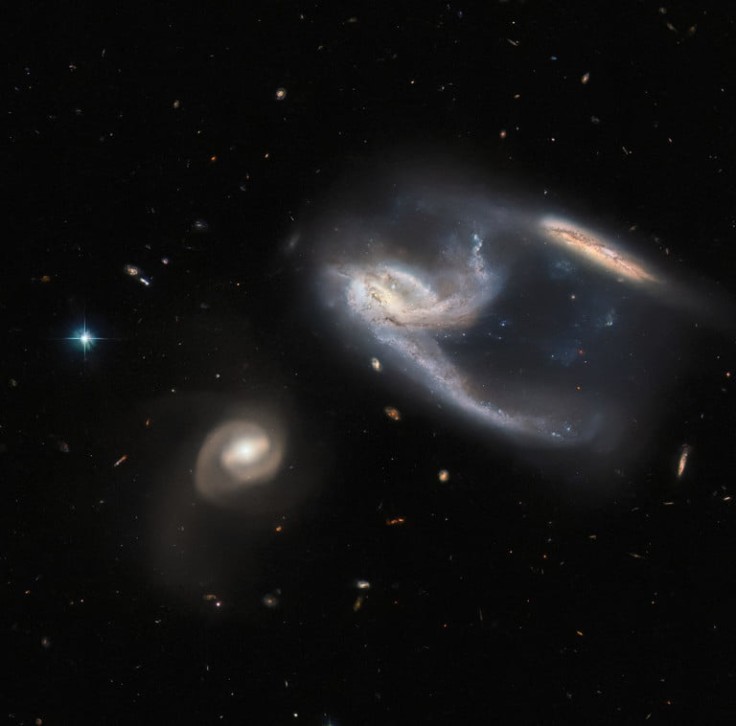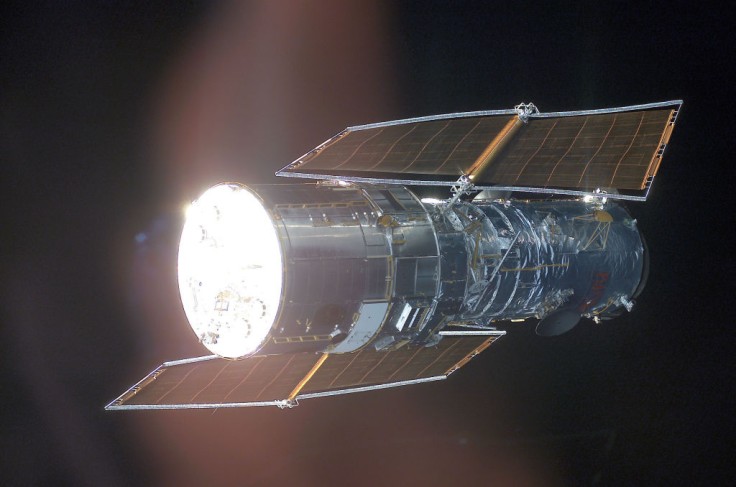If you love watching the stars and the mesmerizing universe at night, then you would never want to miss this new image from NASA where three galaxies (yes, three stunning galaxies!) came so close to one another that they formed a "Starship-Shaped" galactic pair.
NASA and European Space Agency (ESA) released an image of what they termed as "Starship-Shaped Galactic Pair."
Through the advanced camera of the Hubble Space Telescope, the three galaxies were captured while seemingly interacting with one another.

(Photo: ESA/Hubble & NASA, J. Dalcanton, Dark Energy Survey, U.S. Department of Energy (DOE), Fermilab (FNAL), Dark Energy Survey Camera (DECam), Cerro Tololo Inter-American Observatory (CTIO), NoirLab/National Science Foundation/AURA, European Southern Observatory (ESO); Acknowledgment: J. Schmidt / Retrieved from NASA's website)
What's with these three galaxies?

As explained by the ESA in the image's caption posted on NASA's website, two galaxies (seen at the upper right of the image) are interacting with one another, so close that they were able to form a shape which is said to resemble the starship known as the USS Enterprise from Star Trek.
Star Trek is a legendary science fiction series produced by National Broadcasting Corporation (NBC) network in 1966, featuring a starship whose crew was dedicated to exploring the galaxy.
The idea of millions of stars twinkling above us at night is already a breathtaking scene, and three galaxies coming close to one another as if they are going to collide is just a lot more surprising.
But in reality, NASA said galaxies rarely collide head-on with one another because interactions between them take place over extremely long periods of time.
NASA named the three galaxies as NGC 7764A1, NGC 7764A2, and NGC 7764A3.
Collectively, they are known as NGC 7764A.
NGC 7764A lies about 425 million light-years from Earth in the constellation Phoenix.
Wondered why they were named this way? This is because fairly arbitrary and standardized naming is much easier as many celestial objects have many names or names that are sufficiently similar to the names of other objects that they cause confusion.
From how NASA and ESA describe it, the long trails of stars and gas extending from the two galaxies at the top part are like indications that the two "have both just been struck at great speed."
Meanwhile, although there is no definite explanation, it can be seen on the image that the galaxy on the lower-left part of the image is relatively close to the two almost-colliding galaxies, which gives us a hint that it is interacting with the other two on the top.
It is worth noting though that interactions between galaxies take place over extremely long periods of time.
The image showed us how wonderful galaxies can be. Not only do they give us calming, fantstic view at nights (especially when it is too dark), they also teach us that there remain a lot more to discover in the outer space.
As such, the NASA Hubble Space Telescope gives us more to expect. Who knows, maybe it can find baby galaxies starting to form somewhere!









